Endangered Hawaiian Petrels Translocated to Kīlauea Point
A historic project more than 30 years in the making took place on Kauaʻi’s north shore on Monday when 10 endangered Hawaiian Petrel chicks were flown by helicopter from their nesting area to a new colony protected by a predator-proof fence at Kīlauea Point National Wildlife Refuge.
The translocation, which involved three separate teams and more than a dozen people, took place simultaneously in Kauaʻi’s rugged mountain interior and along the coast.
In the early morning, two teams were dropped by helicopter onto mountain peaks located in the Hono O Nā Pali Natural Area Reserve within the Nā Pali-Kona Forest Reserve. The lands are managed by the Hawaiʻi Department of Land and Natural Resources’ Division of Forestry and Wildlife. Upon arrival, teams headed for 10 nest burrows that had been monitored throughout the breeding season.
Each burrow contained a large, healthy chick. State officials say the chicks were carefully removed by hand, placed into pet carriers, and hiked up to the tops of peaks where helicopters picked them up.
“This translocation will establish a new, predator-free colony of the endangered Hawaiian Petrel to help prevent the extirpation of the species from Kauaʻi,” said Michael Mitchell, the US Fish and Wildlife Service Acting Kauaʻi National Wildlife Refuge Complex Project Leader in a joint press release.
“Petrels, like many other native Hawaiian species, are facing tremendous challenges with shrinking habitat and the onslaught of invasive species. Translocating the birds to Kīlauea Point National Wildlife Refuge ensures that this colony of birds will be protected for our children and our children’s children,” said Mitchell.
The chicks were flown to Princeville Airport where the animal care team on the ground assessed their health. From there, they were driven to their new home within the recently completed predator-proof fence in the Nihoku area of the Refuge.
Endangered Hawaiian Petrels, or ʻUaʻu, are one of two seabird species endemic to the Hawaiian Islands and are found nowhere else on Earth.
State officials say the birds have declined dramatically due to a number of threats, including predation by introduced mammals and collisions with man-made structures during their nocturnal flights from breeding colonies in the mountains to the ocean, where they search for food.
At Nihoku, the birds are protected from potential predators by a 7.8-acre enclosure that features fine mesh stainless steel fencing that is 6.5 feet high.
“Predator-proof fencing and translocations of this type are necessary conservation strategies in Hawai’i to deal with widespread non-native predator populations that cannot be readily eradicated,” said Dr. George Wallace, Vice President of American Bird Conservancy in a statement.
“For the Hawaiian Petrel, which is threatened by non-native predators in their montane nesting areas, creation of a colony protected from predators will be a major step forward in stabilizing and recovering its Kauaʻi population,” he said.
Human caretakers will hand-feed the young birds and carefully monitor their growth until the birds leave their new nest burrows and fly out to sea. The petrels will remain at sea for the next three to five years until they return to the same site as adults.
State officials say the new colony will be the only fully protected colony of federally listed seabirds anywhere in the Hawaiian Islands, and “represents a huge achievement towards recovering this species.”
Translocations of Newell’s Shearwater have been identified as an “important next step” in the project.
“We have seen a dramatic decline in the numbers of Newell’s Shearwaters on Kauaʻi in recent years, with an estimated 75 percent drop in the last 15 years,” said Dr. André Raine of Kaua‘i Endangered Seabird Recovery Project in the joint press release.
“The establishment of new colonies of that species using predator-proof enclosures at Nihoku, and possibly other locations in the future, is an important management tool to help reverse this decline.”
Dr. Lindsay Young, the project coordinator with Pacific Rim Conservation said, “What we learn on this project will be crucial to implementing what we hope will be many more projects like this on Kauaʻi and across the state.”
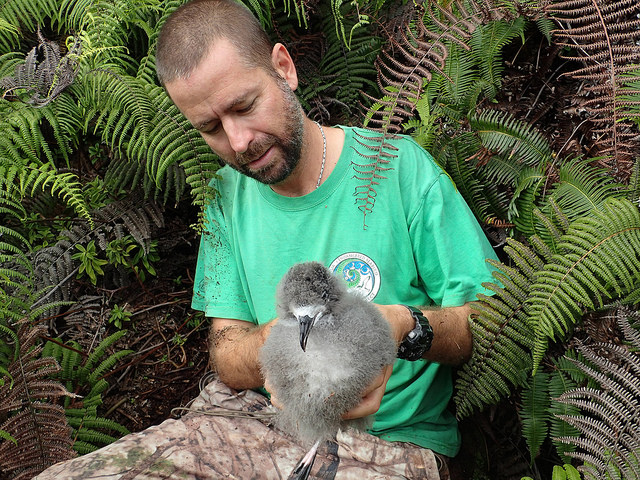
Hawaiian petrel being carefully removed from its burrow. Photo credit: Michael McFarlin/Kaua’i Endangered Seabird Recovery Project.
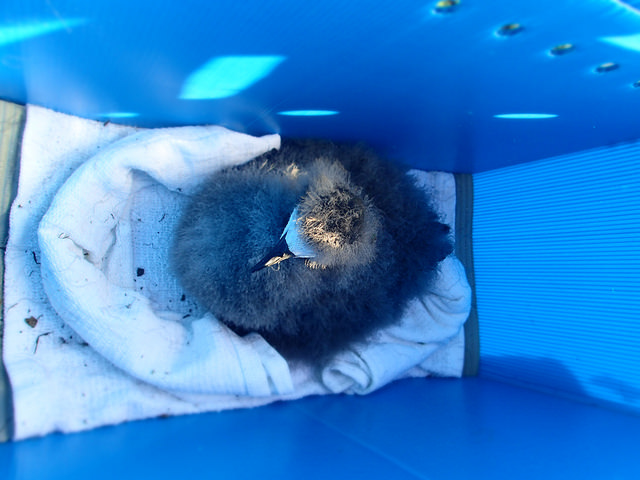
Hawaiian petrel prepped for it’s helicopter ride. Photo credit: Andre Raine/Kaua’i Endangered Seabird Recovery Project.

Hawaiian petrel chick being carefully carried to the helicopter. Photo credit: Eric Vanderwerf/Pacific Rim Conservation.
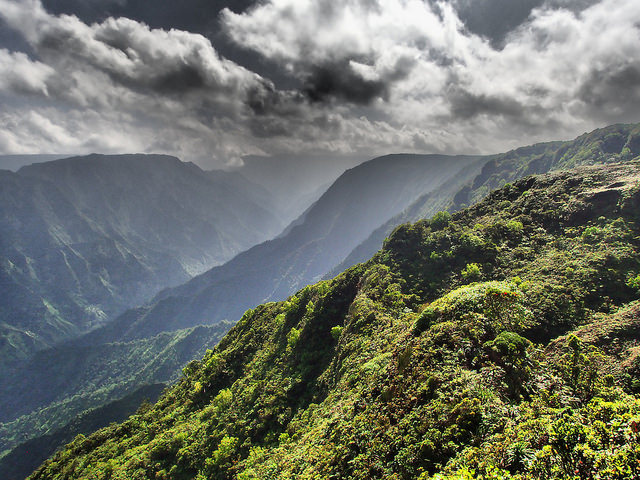
The slopes on which the chicks currently reside. Photo credit: Andre Raine/Kaua’i Endangered Seabird Recovery Project
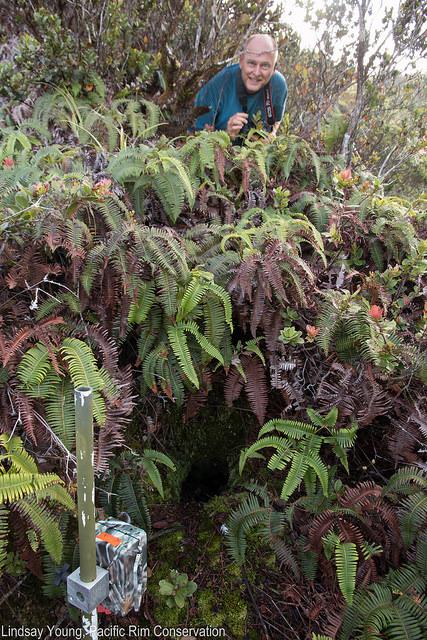
A Hawaiian petrel burrow. Photo credit: Linsday Young/Pacific Rim Conservation

Hawaiian petrel chick in its burrow.
Photo credit: Andre Raine/Kaua’i Endangered Seabird Recovery Project
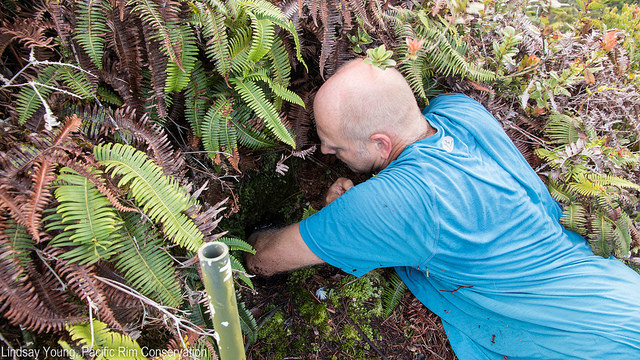
Carefully extracting the chick from the burrow. Photo credit: Linsday Young/Pacific Rim Conservation.
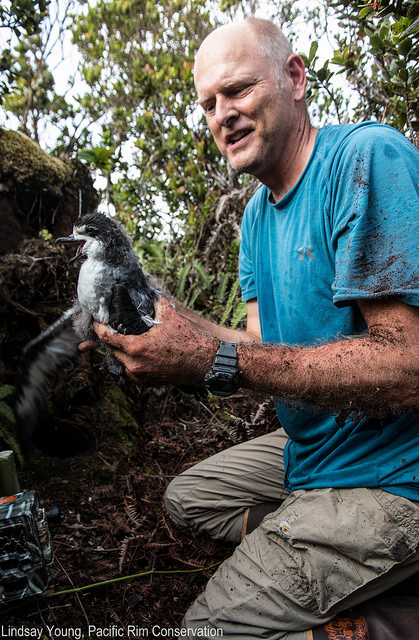
The chicks were carefully removed by hand, placed into pet carriers and hiked up to the tops of peaks where the helicopters picked them up. Photo credit: Linsday Young/Pacific Rim Conservation.
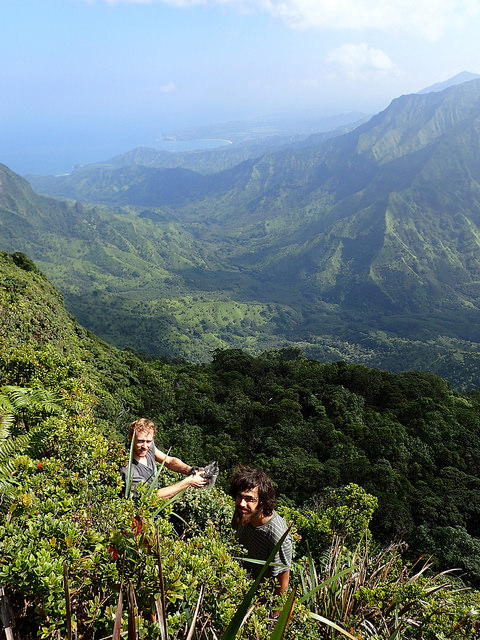
Hawaiian petrel being carefully removed from its burrow. Photo credit: Andre Raine/Kaua’i Endangered Seabird Recovery Project.
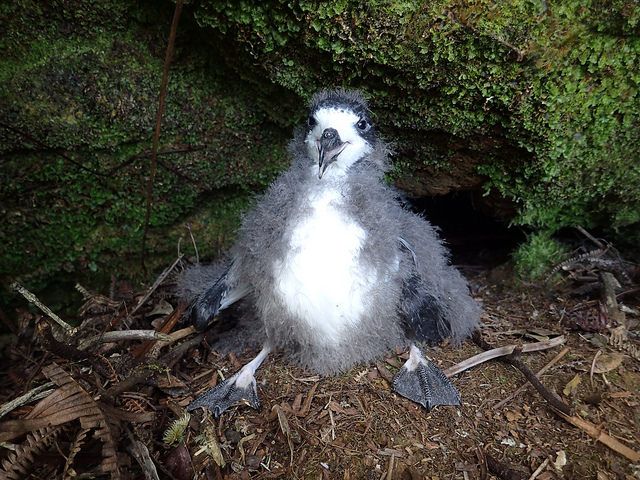
Hawaiian petrel chick in its old burrow on the mountain. Photo credit: Andre Raine/Kaua’i Endangered Seabird Recovery Project.
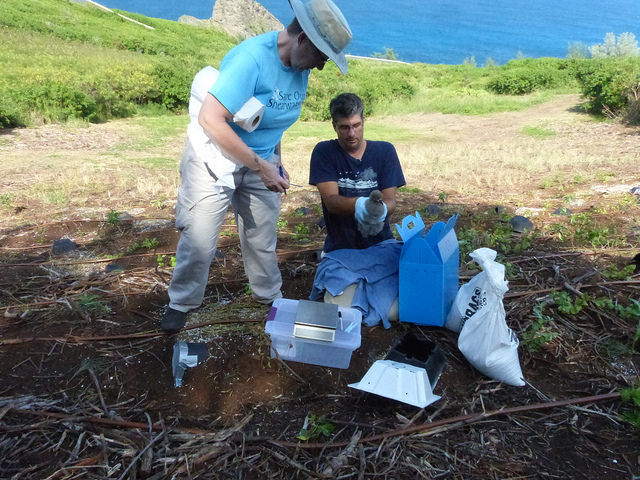
Getting ready to weigh a Hawaiian petrel chick. Photo credit: George Wallace/American Bird Conservancy.
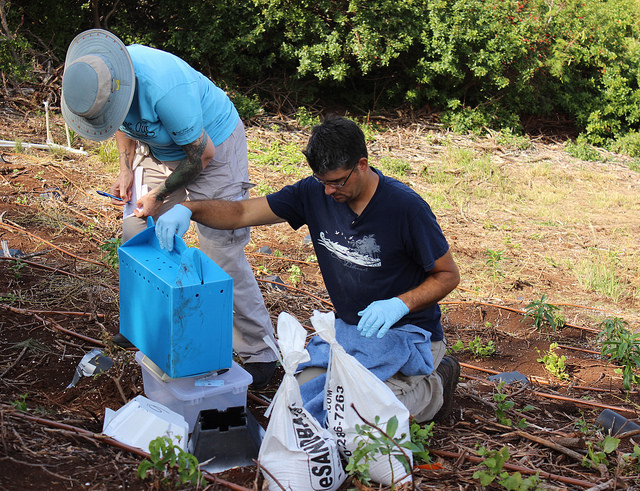
Removing the chicks from their crates. Before the chicks were placed in their new burrows, they were weighed and measured by biologists. Photo credit: Ann Bell/USFWS.
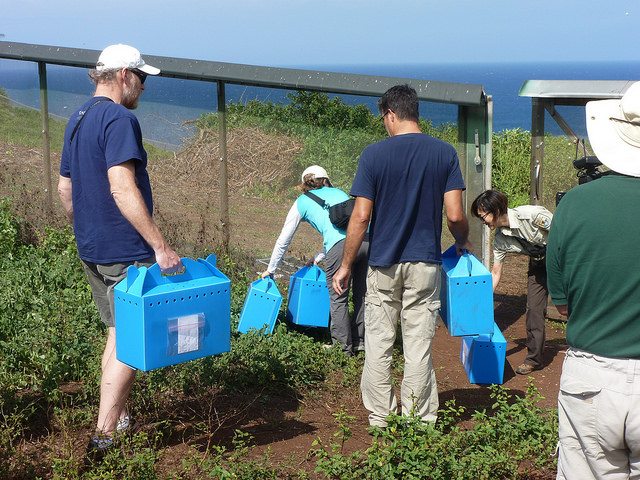
Hawaiian petrel chicks arriving at their new home. Photo credit: Lori Rodriguez/USFWS.

The slopes on which the chicks currently reside. Photo credit: Andre Raine/Kaua’i Endangered Seabird Recovery Project

Island School children and Kumu Sabra Kauka Sing ‘Oli. Photo credit: Ann Bell/USFWS
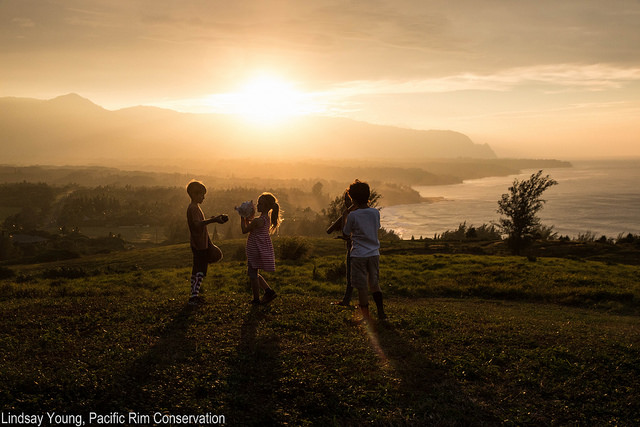
Island School children and Kumu Sabra Kauka prepare for the blessing. Photo credit: Lindsay Young/Pacific Rim Conservation.
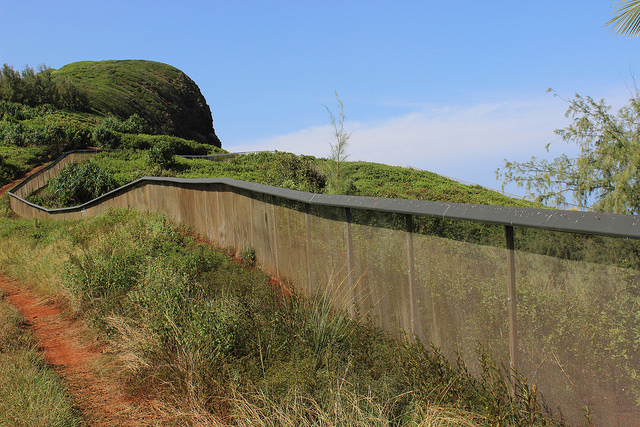
Predator proof fence at Kilauea Point National Wildlife Refuge. Photo credit: Ann Bell/USFWS.
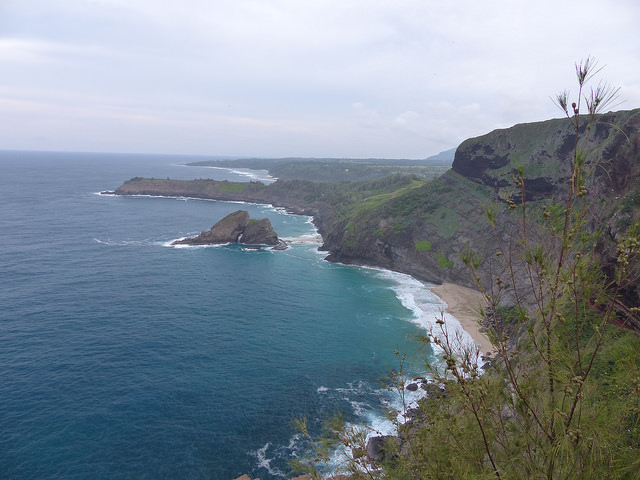
Mokulea Point with predator proof fence visible. Photo credit: George Wallace/American Bird Conservancy












